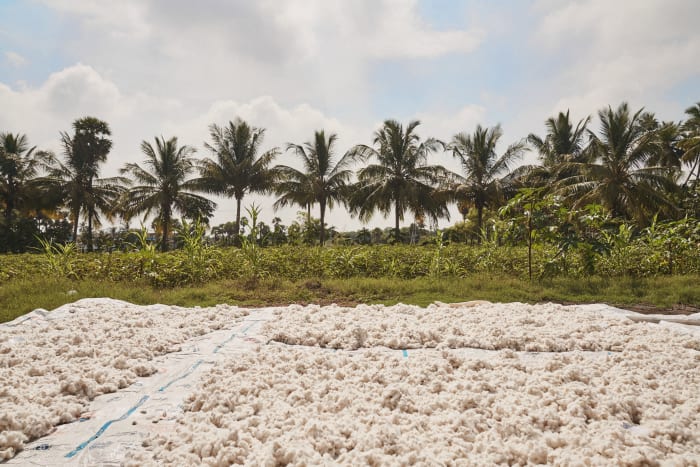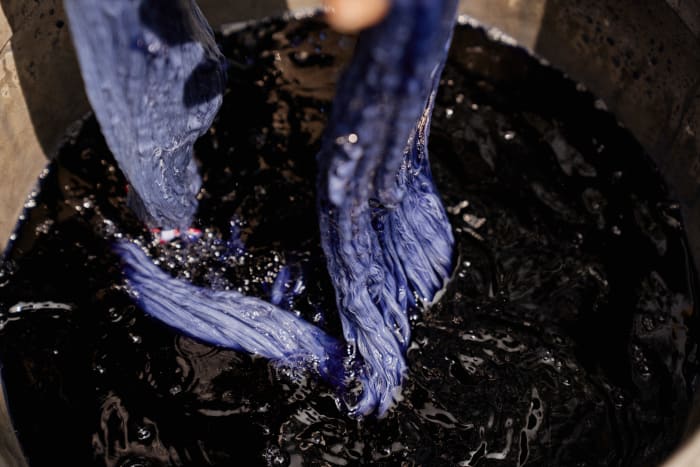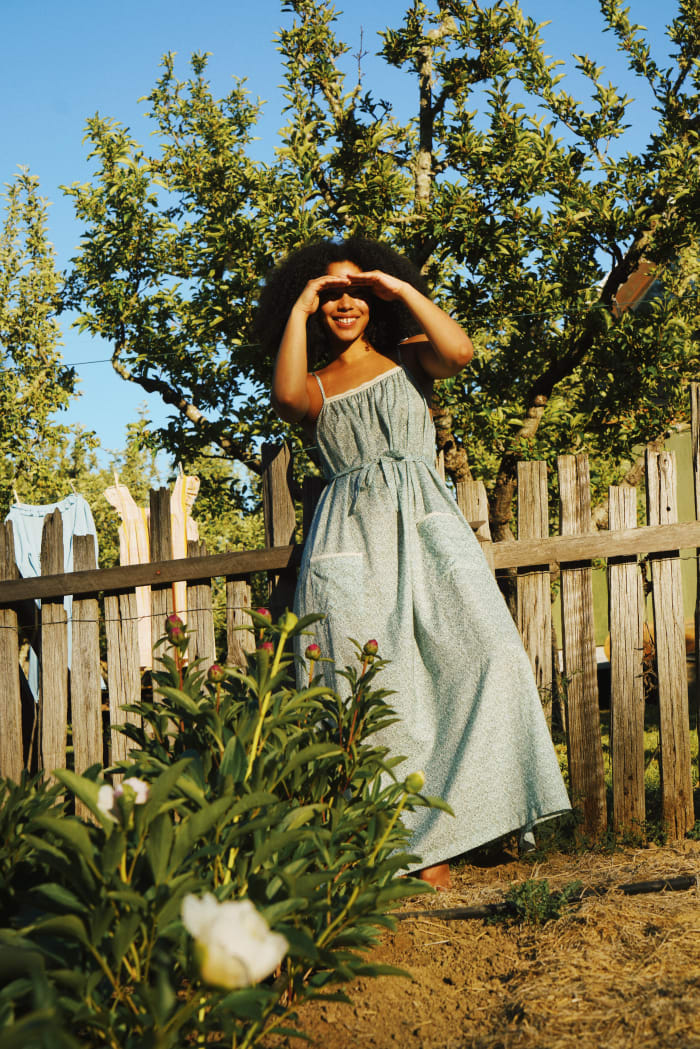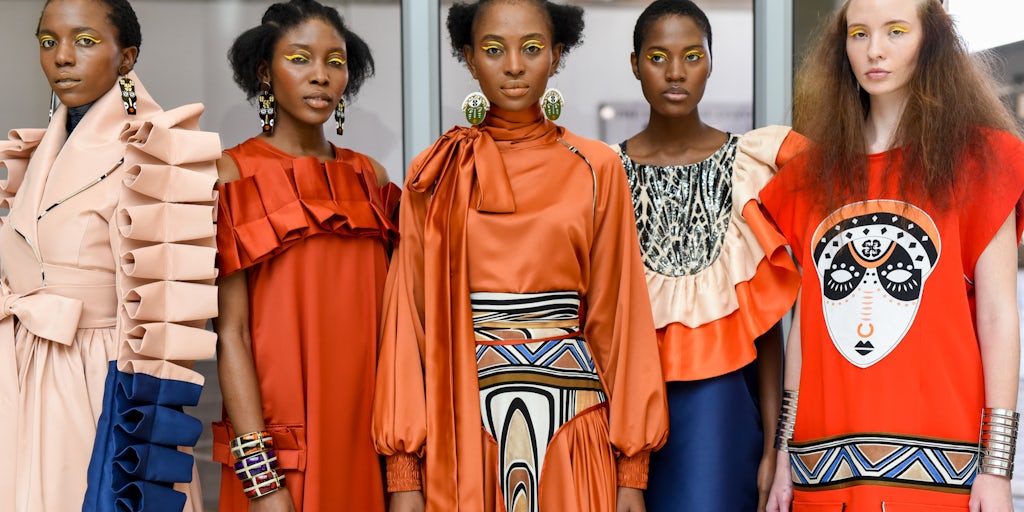
In Fashion, Regenerative Farming Isn’t an Impossible Solution
[ad_1]
In fashion, buzzwords aren’t always a bad thing. By promoting pillars of environmentalism or ethical labor, fashion swings its own needle toward a more transparent, accountable and equitable industry — theoretically, at least. It’s in the application that buzzwords can get lost.
Plastic-free packaging does not a “sustainable” brand make, you see, so brands of all makes and models are embracing specificity, like introducing circularity initiatives or launching low-emission designs. Some have even set out to restore the earth itself by way of regenerative agriculture — which, as The New York Times pointed out in April, fashion can’t seem to get enough of.
Unsurprisingly, Patagonia has already been at it for years: The intrepid outdoor retailer started piloting its own Regenerative Organic standard with cotton farmers in India way back when in 2017. Eventually, regeneration received the ultimate big-business co-sign from Kering in January, when the conglomerate co-founded a group called Regenerative Fund for Nature, providing grants to farmers and NGOs developing regenerative practices around the world.
From an ecological perspective, regenerative agriculture is deeply practical. The industrial farming practices that have long provided cotton, wool and hides for our clothing have also depleted the earth itself. By some accounts, the world could run out of topsoil in just 60 years, at which point, growing plush cotton for our jeans will be the very least of our concerns.
But regenerative farming is not an overnight fix. It takes years to not only rejuvenate exhausted farmland, but to rebuild a supply chain that amplifies local farmers and centers their ancestral methods. It’s an investment smaller businesses aren’t always able to make — especially if they don’t know where to begin.
Los Angeles-based eco-label Christy Dawn, which recently debuted a “Farm-to-Closet” regenerative collection of its own, has a better solution. What if, by making everything available online, they could offer a kind of roadmap for all brands, even those outside the fashion industry, to reference and maybe even implement?

Christy Dawn and Oshadi Collective’s regenerative cotton farm in Kanjikoil, Tamil Nadu, India.
Photo: Courtesy of Christy Dawn
“We don’t want to own it,” says Christy Peterson, the designer behind Christy Dawn. “In fact, it’s not even ours to own. This has been happening for years and years before us. We’re a small brand, but our goal is to share this with the world in hopes that others can join in.”
Within fashion, Christy Dawn and its earthy, Californian wares are often said to exemplify a “cottagecore” aesthetic that celebrates a harmonious existence with nature. Christy Dawn isn’t a cottagecore brand in the literal sense in that it exists outside the definition set by teenagers on the internet in the late 2010s. It does, however, embrace the movement’s most basic ideal of romanticizing a more sustainable way of life.
This is as true in the brand’s chicken-coop-chic design sensibility as in its production practices. Since its launch in 2014, Christy Dawn has steadily gained cult-esque recognition for its use of deadstock fabrics, which artisans in Downtown Los Angeles transform into dresses fit for romping through prairie grass. No two garments are exactly alike, an eccentricity of deadstock that the brand famously commemorates by numbering each piece.
By 2018, Christy Dawn was thriving. But it was around this time that Peterson and her husband, Aras Baskauskas, who serves as Christy Dawn’s CEO, started seeing things differently.
“While we grew as a company and as people, too, we realized how toxic the industry was,” Peterson says. “We also realized that by using deadstock fabric, we weren’t necessarily a part of the problem, but we also weren’t part of the solution.”
Peterson and Baskauskas took issue with the intention of the word “sustainability” itself, which Oxford English Dictionary defines as an “avoidance of the depletion of natural resources in order to maintain an ecological balance.” At this rate, is avoidance alone enough? Climate scientists, categorically, say no.
“I have two small boys, and I remember looking around and thinking, ‘I don’t want to sustain this. How will my boys survive? How will there be food or even people left on this planet if we keep sustaining?,'” she says.
Enter regenerative farming, which doesn’t simply maintain that ecological balance, but accelerates it. Rebuilding degraded soil biodiversity can improve the water cycle and even capture more carbon dioxide from the ambient air. If performed correctly, regeneration can literally reverse climate change. Peterson and Baskauskas grew obsessed.
“We buy regenerative food,” says Peterson. “Could we grow fiber for our clothing in a way that could draw carbon down from the atmosphere?”
To help answer this question, Peterson and Baskauskas turned to Rebecca Burgess, the executive director of sustainable non-profit organization Fibershed, and asked if she knew of anyone who may be interested in creating a regenerative farm alongside them. She didn’t, but in a twist of fate or kismet or whatever sparkly, otherworldly force you believe, the universe had other plans.
That same day, Oshadi Studio‘s Nishanth Chopra was listening to a podcast on which Burgess was a guest when he guessed her email address and sent her a note asking if she knew of any brands that could want to partner with him on a regenerative farm in India. “This was maybe five hours later,” Peterson says. “You know when you have an idea, something you just feel all over your body? It was one of those moments.”
Soon, Christy Dawn and Oshadi Studio came upon a plot of nutrient-devoid land in Kanjikoil, Tamil Nadu, India that had once served as a conventional farm. They leased four acres. (Today, that acreage has grown to 24, with plans to develop 35 more by the end of the year.)
Related Articles:
The Next Wave of Sustainable Fashion Is All About Regenerative Farming
Farmers, Foragers and Homesteaders Are the New Fashion Influencers
Fibershed Offers an Alternative Vision for the Future of the Fashion Industry
Then came the hard part: bringing effectively dead land back to life.
Regenerative farming can be compared to organic farming in that both encourage synthetic- and pesticide-free alternatives. But where regeneration differs is in its focus on biodiversity: A healthy cocktail of microorganisms, insects, plants, animals and yes, even humans, can create such resilient crops that there’s no need for chemical intervention in the first place.
“The farmers used so many creative techniques passed down through the generations,” says Mairin Wilson, Christy Dawn’s director of regenerative practices. In one method, farmers take a cotton pouch full of rice and bury it beneath the oldest tree on the farm, where it sits for a week, after which farmers make a tea out of the rice to spray seedlings. “The oldest tree has the most biodiverse nutrients and abundant mycelial network, so the farmers like to share that abundance with the young cotton plants.”
Meanwhile, for the land, farmers brought in goats to eat the cotton plants and generate enough manure to fertilize the soil, also planting a leguminous cover crop, like indigo or sugar cane, to restore nitrogen, without which a plant cannot grow, metabolize or produce chlorophyll. And because nothing is wasted, Wilson explains, that same indigo is later used to dye the garments while the sugar cane provides sugar that farmers can put in their coffee.

Indigo is first used as a cover crop, then used to dye garments during the production process.
Photo: Courtesy of Christy Dawn
In February 2020, Peterson, Baskauskas and their sons arrived in Tamil Nadu to help harvest the farm’s first batch of cotton. But Peterson is clear: The farmers here are the true protagonists of this story.
“I like to look at this initiative as a story of relationships and intimacy, and being in the right relationship with all the stakeholders involved,” Peterson says. “This isn’t a story of saviorism.”
Fibershed (which partnered with Christy Dawn and Oshadi Studio on the project) strongly emphasizes the importance of regional textile districts, which is why Christy Dawn’s regenerative cotton is ginned, spun, woven and dyed all within six miles of the farm, by farmers who were paid a living wage and able to gain financial independence.
This spring, the brand was finally ready to release the fruits of its labor. Those 24 now-regenerated acres had been able to produce a significant yield of 6,500 dresses, the very first of Christy Dawn’s “Farm-to-Closet” collection. (The second drop arrived in early June, with a third due out July 9.)
Aesthetically, the capsule is nothing if not consistent: Shoppers are able to browse their choice of voluminous maxi dresses or smock-like frocks in a range of ditsy floral prints or rich, solid hues. Garments have been naturally dyed and/or block-printed using a host of regional flora, like wedelia flowers, madder and myrobalan, as well as that aforementioned indigo. The collection also incorporates peace silk, a cruelty-free alternative to regular silk used throughout India.
One day, Peterson aims to move away from deadstock entirely. “The goal is that eventually, we would just be a farm-to-closet company and only use the cotton that the earth provides for us,” she says. “Our projection is that in two years, we can have enough yield to sustain a whole year’s collection worth of clothing, but just from our farm.”
The impact would be considerable: Wilson estimates this initial yield sequestered 66 tons of carbon dioxide, per hectare, which rounds out to just about 22 pounds of carbon per dress.
The brand also has plans outside itself, because environmentally, one regenerative farm on a planet of dying soil is just a drop in a carbon-clogged bucket. Christy Dawn has published its progress on its website, and is open to forming a co-op with like-minded brands that share its values. Peterson warns interested parties, though: Regeneration isn’t like other buzzwords — it’s time-consuming and expensive, yes, yet the return is far greater than any investment, if the fashion industry decides to take the plunge.
“I know it’s an interesting thing that a fashion brand could be wanting to affect change while asking someone to buy a product,” says Peterson. “But we don’t even care if you buy a dress. This is just the vehicle through which we’re sharing a seed to be planted in you to create change. If we can do that while making dresses, then what a beautiful gift.”
Never miss the latest fashion industry news. Sign up for the Fashionista daily newsletter.
[ad_2]
Source link




 We use cookies to optimize our website and our service.
We use cookies to optimize our website and our service. 

Réponses